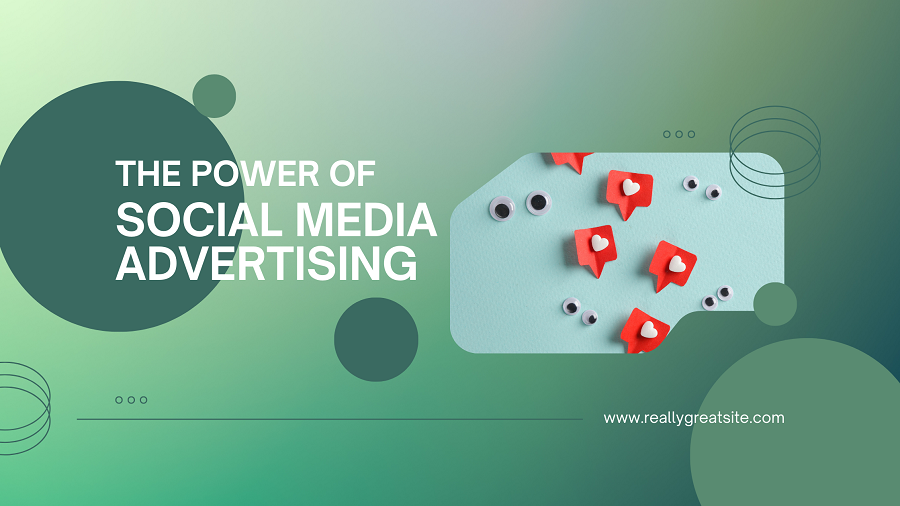Table of Contents
- 0.1 Current Trends in Social Media Advertising
- 0.2 The Rise of AI and Machine Learning in Social Media Ads
- 0.3 The Growing Importance of Privacy and Data Protection
- 0.4 The Impact of AR and VR on Social Media Advertising
- 0.5 The Future of Influencer Marketing
- 0.6 Predictions for the Next 5 Years
- 0.7 Final Thoughts
- 1 Our Digital Marketing Services at low cost in Delhi
A drastic shift in social media advertising has been witnessed over the years from its primitive era of ordinary banners and promoted messages. Once regarded as a unique method of reaching out to prospective clients has, however, developed into an important segment of each marketing plan that is successful.
With over 4 billion active users on platforms like Facebook, Instagram, TikTok and LinkedIn, social media is one of the best marketplace for businesses to remain in touch with their potential customers on any given day. As such it is essential for businesses to keep up with the latest trends if they want to take advantage of social media. In this fast changing environment, even yesterday’s successful approaches may not be quite as productive today or even tomorrow.
Therefore what does the future hold for social media advertising? Let’s explore various recent trends and forecasts that define its fate in the digital marketing domain.
Current Trends in Social Media Advertising
To understand the future of social media advertisements, the existing influences that affect business advertisements on these platforms should first be looked at. Some of these trends include:
-
Video ads
The most visible kind of social media advertisement today is video content. They are not only attractive but also memorable and therefore help to enhance conversion rates. For instance, video content may take the form of short clips found in TikTok or Instagram reels or even longer versions that may be found on YouTube. In addition, more brands use videos to narrate their stories, show how products work and thus establish deeper emotional links with audiences. The interactive element involved in videos makes them stand out as they give room for viewers’ full immersion into a brand’s story which subsequently boosts retention and interaction.
-
Influencer Marketing
Influencer marketing is still an effective way for companies to get more people talking about them and reaching out to new audiences. When influencers are brought on board, it is easy to harness their relationship of trust that they have with their followers due to the large number of followers they have. Thus, brands can use Influencer marketing as a statement that they have the single most important place in their hearts.
When compared to ads, which sometimes seem so far away from buyers or merely about making money, partnering with influencers is like talking face-to-face about life situations yields a better result. In addition, this feeling of being real is especially important in these times where people use digital technologies like phones, tablets and computers to maintain proximity to one another across geographical space that separates them.
-
Social E-Commerce
The incorporation of social media in e-commerce—termed as social commerce— is another aspect that alters the business landscape. In this way, a user can view and buy products directly from platforms like Instagram Shopping, Facebook Marketplace, or TikTok shopping. The increase in conversion rates and user engagement as well as the reduction of online shopping friction are all results of this merger. As we move forward into the future of social commerce, new ideas will keep appearing to improve user experience and improve sales.
These trends are pushing the boundaries of advertising by making it more interactive, personalized, and integrated into the daily social media habits of users.
The Rise of AI and Machine Learning in Social Media Ads
Social media ad strategies are becoming more centered around artificial intelligence (AI) and machine learning. These technologies provide effective tools for ad campaigns by analyzing huge amounts of data to predict consumer behavior, customize advertisements, and improve targeting.
-
Advertisement Optimization
AI algorithms can automatically change ad bids as well as placement to get the maximum effectiveness. AI keeps track of performance on a real-time basis through various methods which allow it to find out which ads are performing well, thereby allowing immediate action to be taken where adjustments will be needed. Such automation not only enhances advertisement performance; it also reduces expenses by ensuring that marketing expenditures are always properly utilized. With continuous advancements in AI technology, we anticipate even more sophisticated means of spending on advertisements hence raising investment returns.
-
Personalized Advertising
Machine learning algorithms analyze an immense amount of user data that allows the generation of extremely personalized ads that appeal to distinct consumers. As a result, this level of customization improves consumer engagement and conversion rates since people are likely to react positively to advertisements they find relatable and customized to their needs and preferences. Social media advertising will be further changed by AI and machine learning through more accurate audience definition and reduced ad expenditure, leading to increased returns on investment for the companies involved.
The Growing Importance of Privacy and Data Protection
As the power of data-driven advertising grows, so too does the responsibility of businesses to handle consumer data ethically and transparently. Recent regulations, such as the General Data Protection Regulation (GDPR) in Europe and the California Consumer Privacy Act (CCPA) in the United States, have prompted companies to reevaluate their data practices and prioritize user privacy.
-
Impact on Advertising
These regulations limit how companies can collect, store, and use personal data, directly affecting how ads are targeted on social media. To stay compliant, businesses must be more transparent about their data practices and obtain explicit consent from users before collecting or using their personal information. This shift towards greater transparency and accountability is forcing advertisers to adopt new strategies for targeting users while respecting their privacy.
-
Building Trust
In an era of growing privacy concerns, companies that prioritize ethical data use and customer privacy will be better positioned for long-term success. Brands should focus on being transparent about their data practices, giving users control over their personal information, and building trust through responsible data management. By demonstrating a commitment to user privacy, businesses can strengthen their relationships with customers and build a loyal, engaged audience.
The Impact of AR and VR on Social Media Advertising
Augmented reality (AR) and virtual reality (VR) are no longer just futuristic concepts; they are becoming integral parts of social media advertising strategies.
-
Augmented Reality Ads: Creating Interactive Experiences
AR technology allows users to interact with digital elements in their real-world environment. For example, brands can use AR to let users virtually try on sunglasses, see how a piece of furniture would look in their home, or test different makeup looks. These interactive experiences are highly engaging and memorable, providing a unique way for brands to connect with their audiences. As AR technology becomes more accessible, we can expect to see even more innovative uses of AR in social media advertising.
-
Virtual Reality Ads: Immersing Users in Brand Narratives
While still in its early stages, VR advertising offers unique opportunities for brands to create fully immersive experiences that capture users’ attention and leave a lasting impression. By transporting users into a completely virtual environment, brands can create experiences that are not only engaging but also highly memorable. As VR technology continues to evolve, we can expect to see more brands experimenting with VR ads to create innovative and impactful marketing campaigns.
The Future of Influencer Marketing
Influencer marketing is evolving rapidly, driven by the emergence of new platforms and technologies that are changing the way brands collaborate with influencers.
-
New Platforms: Expanding Beyond Traditional Channels
While Instagram and YouTube have traditionally been the primary platforms for influencer marketing, newer platforms like TikTok and Twitch are quickly gaining popularity, particularly among younger audiences. These platforms offer unique opportunities for brands to reach new demographics and engage with users in more creative and interactive ways.
-
Micro-Influencers: Building Authentic, Niche Communities
Instead of partnering with influencers who have millions of followers, many brands are now turning to micro-influencers—those with smaller but highly engaged audiences. Micro-influencers often have a more niche following and can deliver more targeted and authentic content. This shift towards micro-influencers reflects a broader trend towards more personalized and community-focused marketing strategies. In the future, we can expect to see brands building long-term, authentic relationships with influencers who align with their values and resonate with their target audience.
Predictions for the Next 5 Years
So, what does the future hold for social media advertising over the next five years? Here are a few expert predictions:
-
Increased Use of AI and Automation
As AI technology continues to advance, we can expect to see more sophisticated tools that can create, test, and optimize ads with minimal human intervention. This increased use of AI and automation will allow businesses to run more efficient and effective ad campaigns, ultimately driving better results and reducing costs.
-
Greater Focus on Personalization
As brands continue to leverage AI and machine learning, ads will become even more personalized, delivering hyper-targeted content that resonates with individual users. This trend towards greater personalization will drive higher engagement and conversion rates, ultimately improving the effectiveness of social media advertising.
-
Integration of AR/VR in Mainstream Ads
As AR and VR technologies become more accessible, more brands will adopt these immersive ad formats to create unique and engaging experiences for their audiences. This trend towards more interactive and immersive advertising will continue to evolve as technology advances and user expectations change.
-
Heightened Privacy Concerns
With more regulations likely to come, businesses will need to navigate an increasingly complex landscape of data privacy laws while finding new ways to reach and engage their audiences. Companies that prioritize ethical data use and transparency will be better positioned for long-term success in this evolving landscape.
-
Emergence of New Social Platforms
Just as TikTok took the world by storm, new social platforms will continue to emerge, offering fresh opportunities for advertisers to reach new audiences and engage with users in innovative ways. Staying ahead of these trends and being adaptable to new platforms will be key to future success.
Final Thoughts
The world of social media advertising is dynamic and constantly evolving. To stay competitive, businesses must stay informed about the latest trends, embrace new technologies like AI and AR, and prioritize data privacy.
By being adaptable and forward-thinking, brands can leverage these changes to build stronger connections with their audiences and drive business growth. Whether you’re a seasoned marketer, just getting started or hiring the top branding company in Kolkata, now is the time to start preparing for the future of social media advertising.




